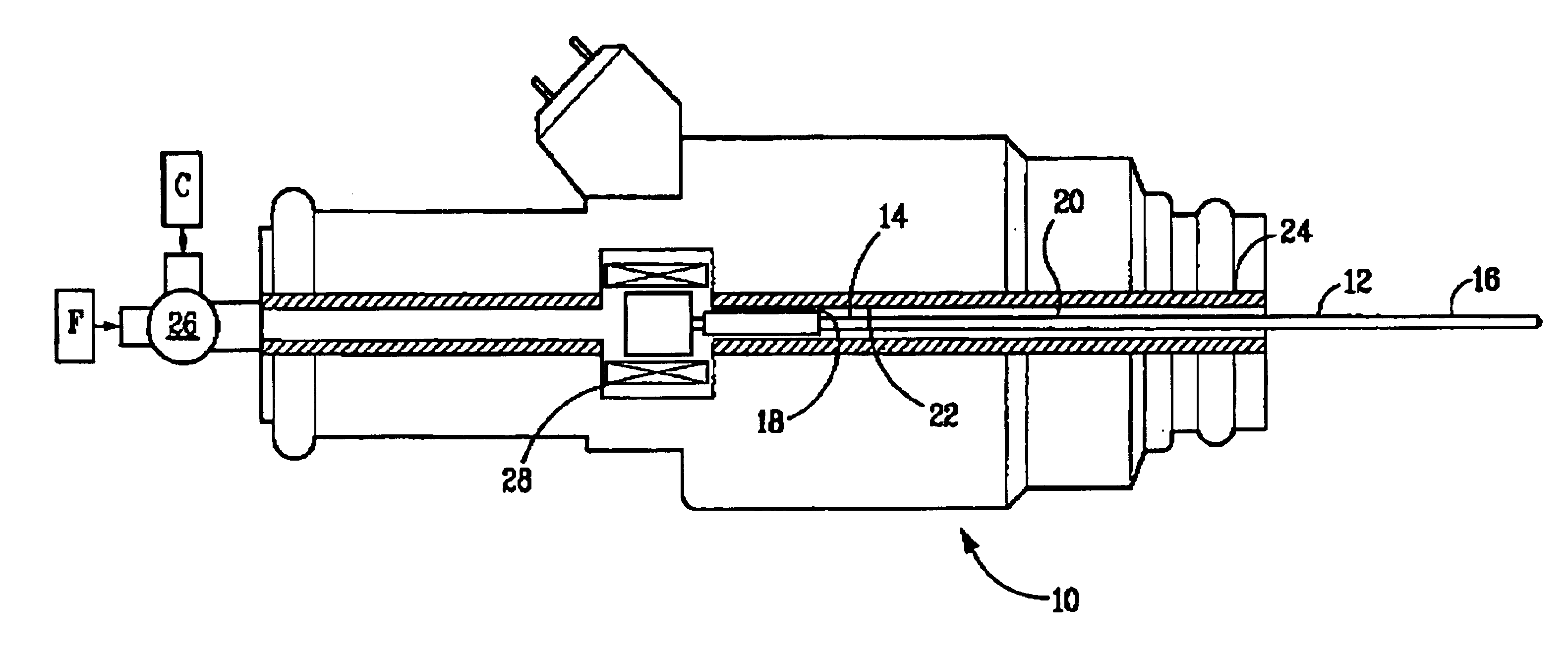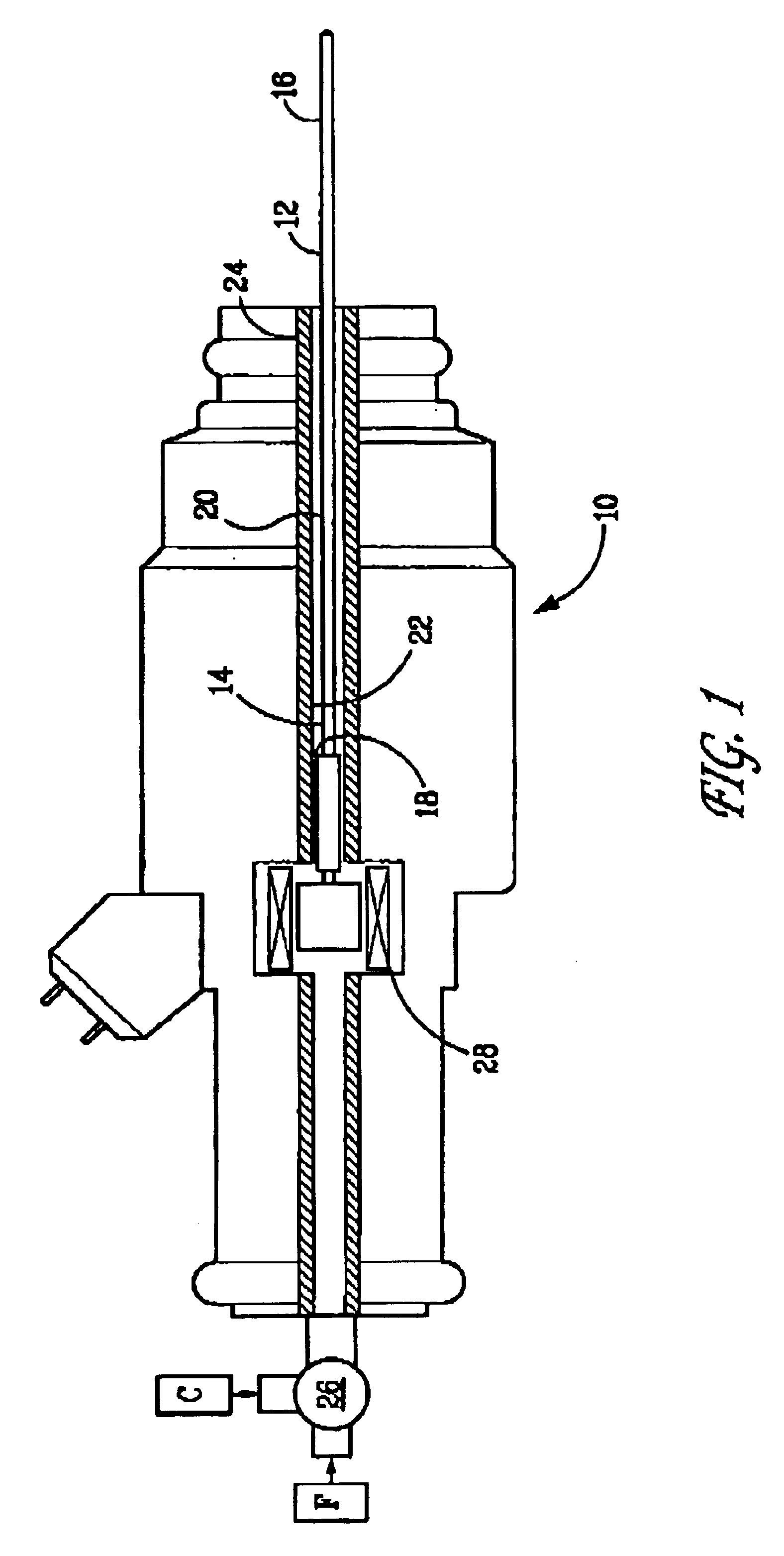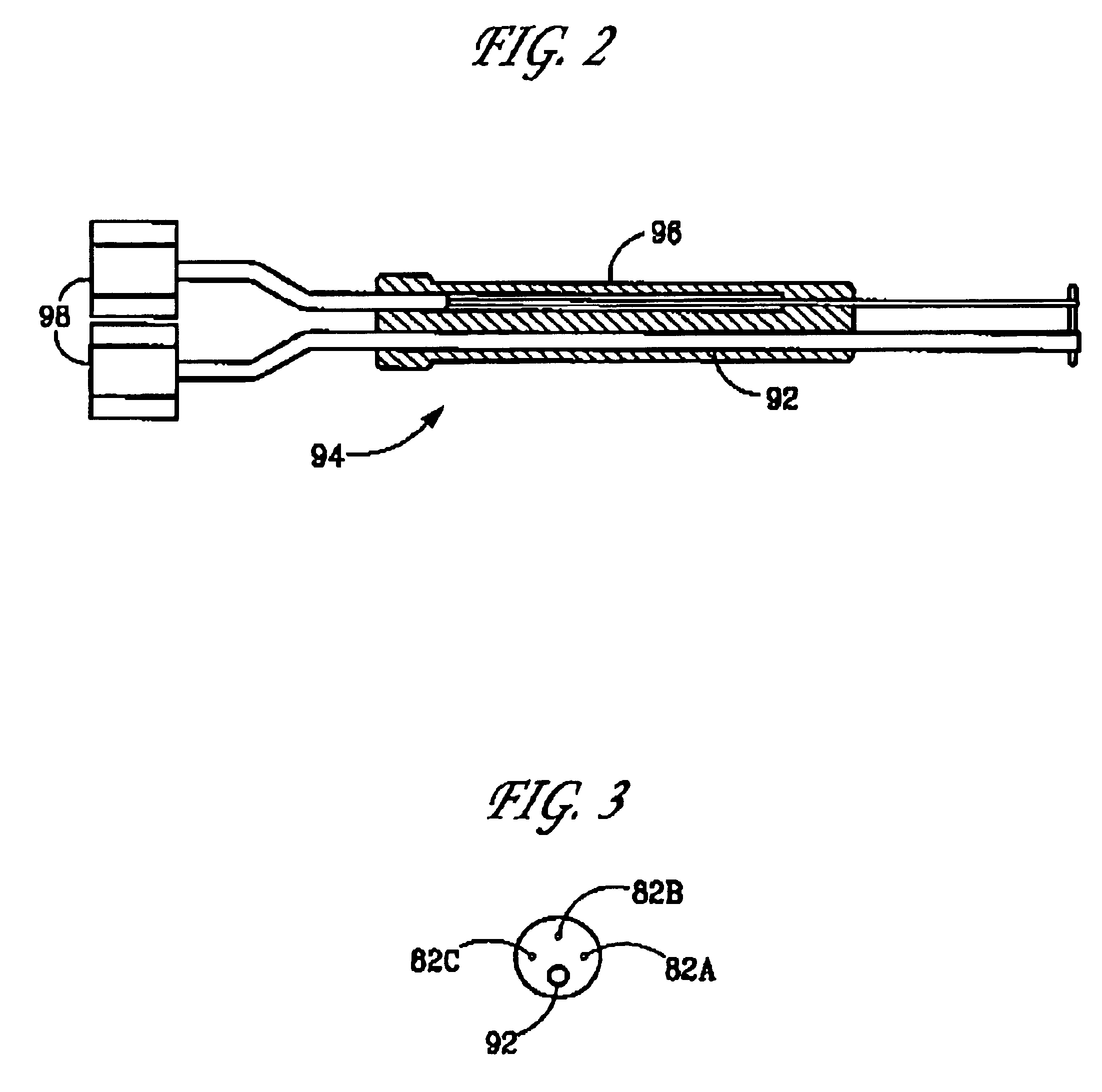Apparatus and method for preparing and delivering fuel
a technology for preparing and delivering fuel, applied in lighting and heating apparatus, combustion types, instruments, etc., can solve the problems of high emissions, inability to apply many conventional fuel delivery methods (e.g. pressure atomization, twin-fluid or duplex atomization, ultrasonic atomization) to small-scale systems, and the effect of the preparation method is significan
- Summary
- Abstract
- Description
- Claims
- Application Information
AI Technical Summary
Benefits of technology
Problems solved by technology
Method used
Image
Examples
example 1
Tests were performed wherein JP 8 jet fuel was vaporized by supplying the fuel to a heated capillary passage at constant pressure with a micro-diaphragm pump system. In these tests, capillary tubes of different diameters and lengths were used. The tubes were constructed of 304 stainless steel having lengths of 1 to 3 inches and internal diameters (ID) and outer diameters (OD), in inches, as follows: 0.010 ID / 0.018 OD, 0.013 ID / 0.033 OD, and 0.017 ID / 0.025 OD. Heat for vaporizing the liquid fuel was generated by passing electrical current through a portion of the metal tube. The droplet size distribution was measured using a Spray-Tech laser diffraction system manufactured by Malvern. Droplets having a Sauter Mean Diameter (SMD) of between 1.7 and 4.0 μm were produced. SMD is the diameter of a droplet whose surface-to-volume ratio is equal to that of the entire spray and relates to the spray's mass transfer characteristics.
example 2
Tests were conducted to demonstrate the benefits of the oxidation cleaning technique on a heated capillary flow passage using an unadditized, sulfur-free base gasoline known to produce high levels of deposit formation. The capillary flow passage employed for these tests was a two-inch long heated capillary tube constructed of stainless steel, having an inner diameter of 0.023 inch. Fuel pressure was maintained at 10 psig. Power was supplied to the capillary to achieve various levels of R / Ro; where R is the heated capillary resistance and Ro is the capillary resistance under ambient conditions.
FIG. 8 presents a graph of fuel flow rate vs. time. As shown, for this gasoline containing no detergent additive, significant clogging was experienced in a very short period of time, with a 50% loss in flow rate observed in as little as 10 minutes.
After substantial clogging was experienced, fuel flow was discontinued and air at 10 psig substituted. Heating was provided during this period and, i...
example 3
This example demonstrates that clogging is far less severe in the heated capillary flow passage of Example 2, when a commercial-grade gasoline employing an effective additive package is employed. As shown in FIG. 9, less than a 10% reduction in fuel flow rate was experienced after running the device for nearly four hours.
PUM
 Login to View More
Login to View More Abstract
Description
Claims
Application Information
 Login to View More
Login to View More - R&D
- Intellectual Property
- Life Sciences
- Materials
- Tech Scout
- Unparalleled Data Quality
- Higher Quality Content
- 60% Fewer Hallucinations
Browse by: Latest US Patents, China's latest patents, Technical Efficacy Thesaurus, Application Domain, Technology Topic, Popular Technical Reports.
© 2025 PatSnap. All rights reserved.Legal|Privacy policy|Modern Slavery Act Transparency Statement|Sitemap|About US| Contact US: help@patsnap.com



